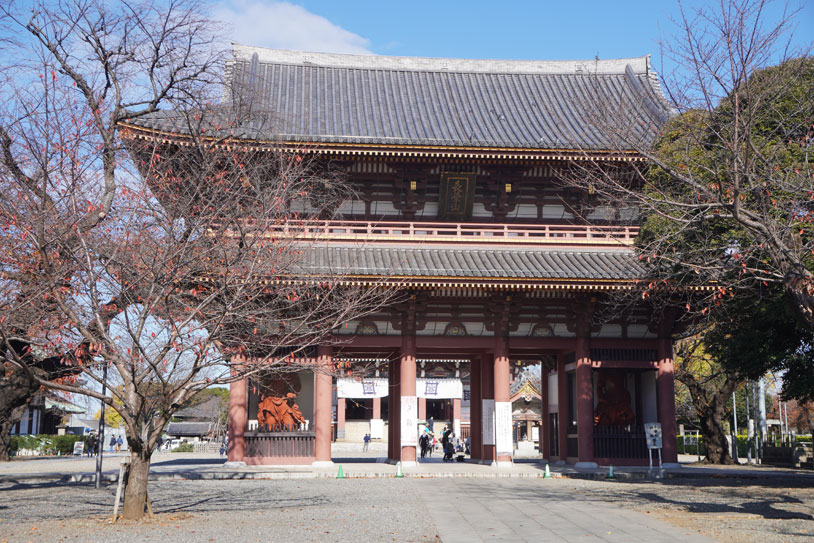- Tokyo top
- Central
- My Akihabara
- Yushima Seido
- Kanda-Jinbocho
- Edojo - Shoguns’ Palace
- Hibiya Park
- Ginza - clues to its past
- Zojoji - Shoguns’ graveyard
- Tokyo Tower
- Minato Shichi-fukujin
- Maruyama Kofun
- Always Sanchome-no-yuhi
- North & East
- Shibamata - Tora-san
- Tokyo Sky Tree
- Asakusa
- Kappa-bashi
- Monzen-Nakacho
- Yanaka after 12 years
- Rikugien
- Koishikawa Bot. Gardens
- Zoshigaya Cemetery
- West
- Azabu Jūban
- Meiji Jingu
- Shinjuku Golden Gai
- Nakano Broadway
- Shibuya - Shibuchika
- South
- Ikegami Honmon-ji
- Western Suburb
- Koenji - Awa-odori Festival
- Koenji - Look Street
- Hamadayama in 2011
- Hamadayama
- Narita - history of a district
- Kamakura-kaido - old road
- Seven windings at Ozaki
- Asagaya Estate
- Zenpukuji-gawa
- Inokashira Park
- Harmonica Yokocho
- Architectural Museum
- Jindaiji and Gokryeo
- Ookunitama-Jinja in Fuchu
- Mt.Takao
- Coast
- Odaiba waterfront city
- Takanawa - Shinagawa
- Ota Wholesale Market
- Tokyo Sea Life Park

Ikegami Honmon-ji
- the oldest pagoda in Kanto Region
Ikegami Honmon-ji Temple is one of the main temples of the Nichiren sect, which is a leading Buddhist sect in Japan. Nichiren (1222-1282), the founder of the Nichiren sect, ardently preached that the Lotus Sutra is the predominant existence among many scriptures and violently attacked the denominations that follow the teachings contrary to his theory. Nichiren was born in Kamogawa, a small town on the southern coast of Chiba prefecture, where I am from. Therefore, when I was a child, I felt a sense of attachment to Nichiren as a local hero, though I didn't really understand his religious position. Nichiren was based in the present Yamanashi prefecture in his later years. When he became very ill, he wanted to have hot-spring treatment in Ibaragi. However, on his way to the destination, he passed away at the place where Honmon-ji is now. Honmon-ji Temple was built by the powerful family Ikegami of the area to commemorate the virtue of Nichiren.
Most of the buildings of Honmon-ji Temple burned up due to the air raids of the US military during World War II, but some buildings such as the five-storied pagoda survived, and the entire Temple area well keeps reminiscence to the Edo period.

Somon of Honmon-ji Temple. Through the gate the stone steps by Kiyomasa Kato are seen.
Passing through the Sohmon, we can see in front of us the 96 stone steps donated by Kiyomasa Kato (1562-1611), a powerful feudal lord. There have been several restorations since then, but the steps still retain the atmosphere of the early 17th century construction.

Looks nice, though this Nioumone is made of concrete in place of timber.

Daido houses an old wooden Nichiren statue and is the center of Nichiren worship.
 The goju-no-to (five-storied pagoda) was donated by Hidetada (1579-1632), the second shogun of the Tokugawa Shogunate, and was originally built in 1607. If I hear about goju-no-to in Tokyo, it immediately reminds me of Kan'ei-ji in Ueno. But, the goju-no-to of Kan'ei-ji is not as old as that of Honmon-ji. Goju-no-to of Kan'ei-ji was built in
The goju-no-to (five-storied pagoda) was donated by Hidetada (1579-1632), the second shogun of the Tokugawa Shogunate, and was originally built in 1607. If I hear about goju-no-to in Tokyo, it immediately reminds me of Kan'ei-ji in Ueno. But, the goju-no-to of Kan'ei-ji is not as old as that of Honmon-ji. Goju-no-to of Kan'ei-ji was built in  1639. The goju-no-to of Senso-ji Temple in Asakusa and of Takahata Fudo are both made of concrete after World War II, and have no historical value. Hokekyo-ji Temple in Ichikawa, Chiba Prefecture, belongs to the same Nichiren sect as Honmon-ji, and it also has an old goju-no-to, but the pagoda was built in 1622, later than Honmon-ji. Nikko Toshogu has a colorful goju-no-to, but the initial pagoda was destroyed by fire, and the current one was completed in 1818, late in the Edo period.
1639. The goju-no-to of Senso-ji Temple in Asakusa and of Takahata Fudo are both made of concrete after World War II, and have no historical value. Hokekyo-ji Temple in Ichikawa, Chiba Prefecture, belongs to the same Nichiren sect as Honmon-ji, and it also has an old goju-no-to, but the pagoda was built in 1622, later than Honmon-ji. Nikko Toshogu has a colorful goju-no-to, but the initial pagoda was destroyed by fire, and the current one was completed in 1818, late in the Edo period. In summary, Ikegami Honmon-ji has, among the four goju-no-to which were built in the Edo Era and still exist in the Kanto region, the oldest goju-no-to. The goju-no-to of Ikegami Honmon-ji was originally constructed in front of Daido, however, it was relocated to its current location in 1709, and at that time, the top three layers of the five-storied roof were changed from earthenware to copper tiles so that the upper part was lighter and stronger against natural hazards. We can also see an unusual example that the lowest roof was built in Japanese style but the second and upper roofs were built in Chinese style.
The Kyozo (Buddhist scripts storage) beside the Daido also survived the air raid. The building keeps precious Buddhist scriptures. Among them are the complete Buddhist canon published by Tenkai (1536-1643), who was a Buddhist monk and a very influential advisor to Ieyasu (1543-1616), the founder of Tokugawa Shogunate.
If you pass by the Kyozo, turn left in front of the newly built main hall of Honmon-ji and walk down stone steps, you will see a large and glittering Taho-to (Many Jewelled Pagoda) on your right. It was built commemorate the 550th anniversary of Nichiren’s death, in the place where Nichiren’s remains were cremated.

Taho-to is a form of pagoda invented in Japan.

Kyozo stores many Buddhist scriptures.

A sweets set comprising of tokoroten, kuzumochi, anmitsu, (black sugar syrup) and shiruko
(from right top clockwise)